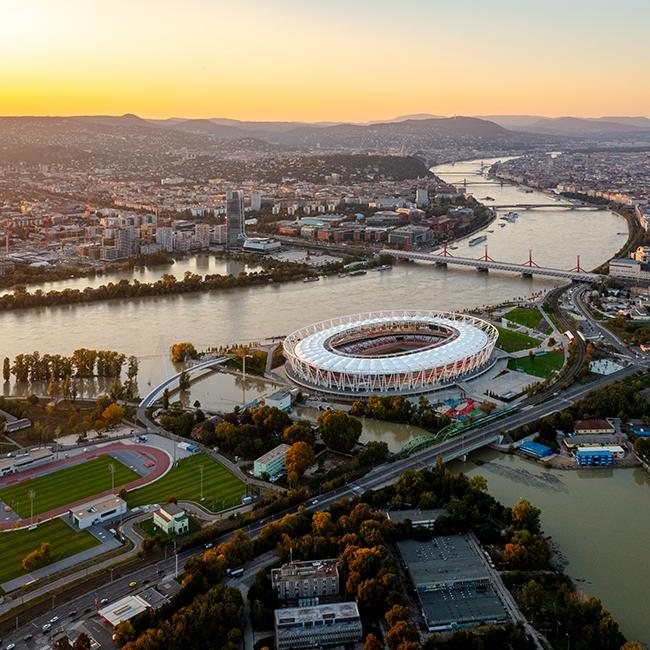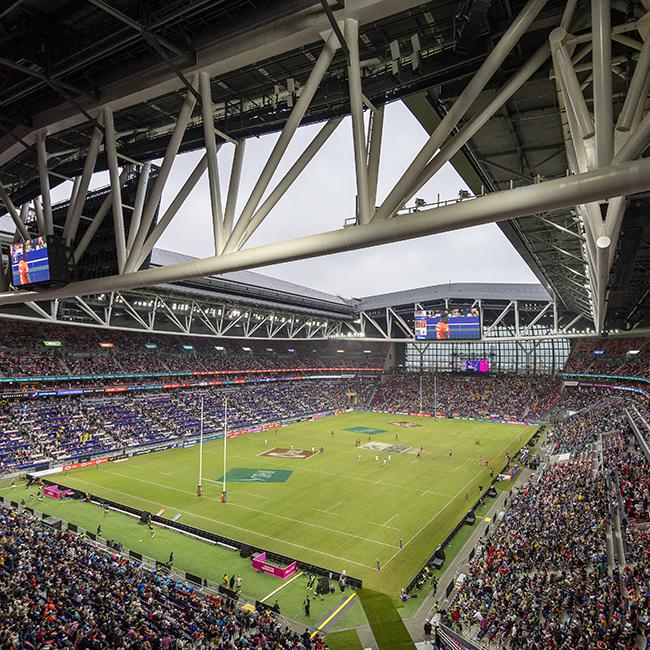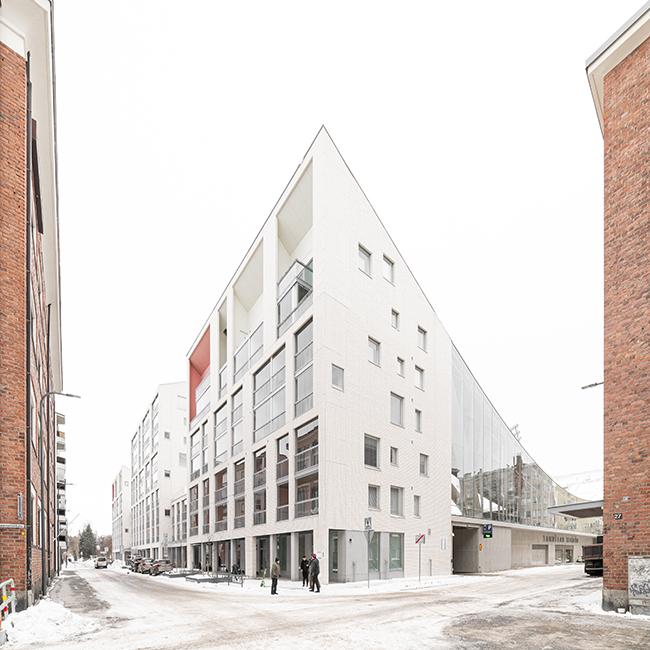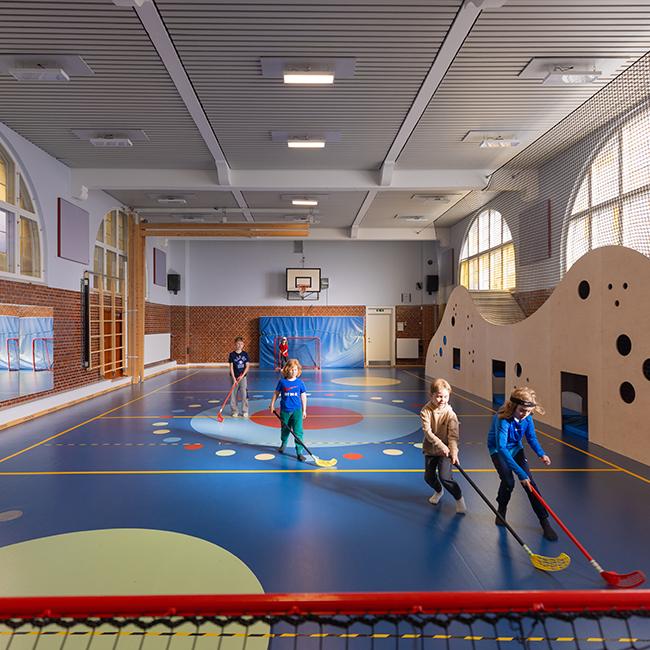Venue readiness
published in sb 5/2020
Author and graphics: Populous, UK www.populous.com
The global effects of the Covid-19 pandemic have produced one of the greatest challenges to affect the whole of society in a generation. While people from around the world are coming to terms with the health, economic and social ramifications of the virus, many businesses in the sports and entertainment industry are taking unprecedented steps to make their venues Covid-secure and start planning to welcome supporters back once again. From our global experience and round table discussions with regulators, governmental bodies, owners, and operators, this article outlines the key areas and strategies that we have seen within the industry and seeks to shed light on what the future might look like for Covid-secure sports venues around the world.
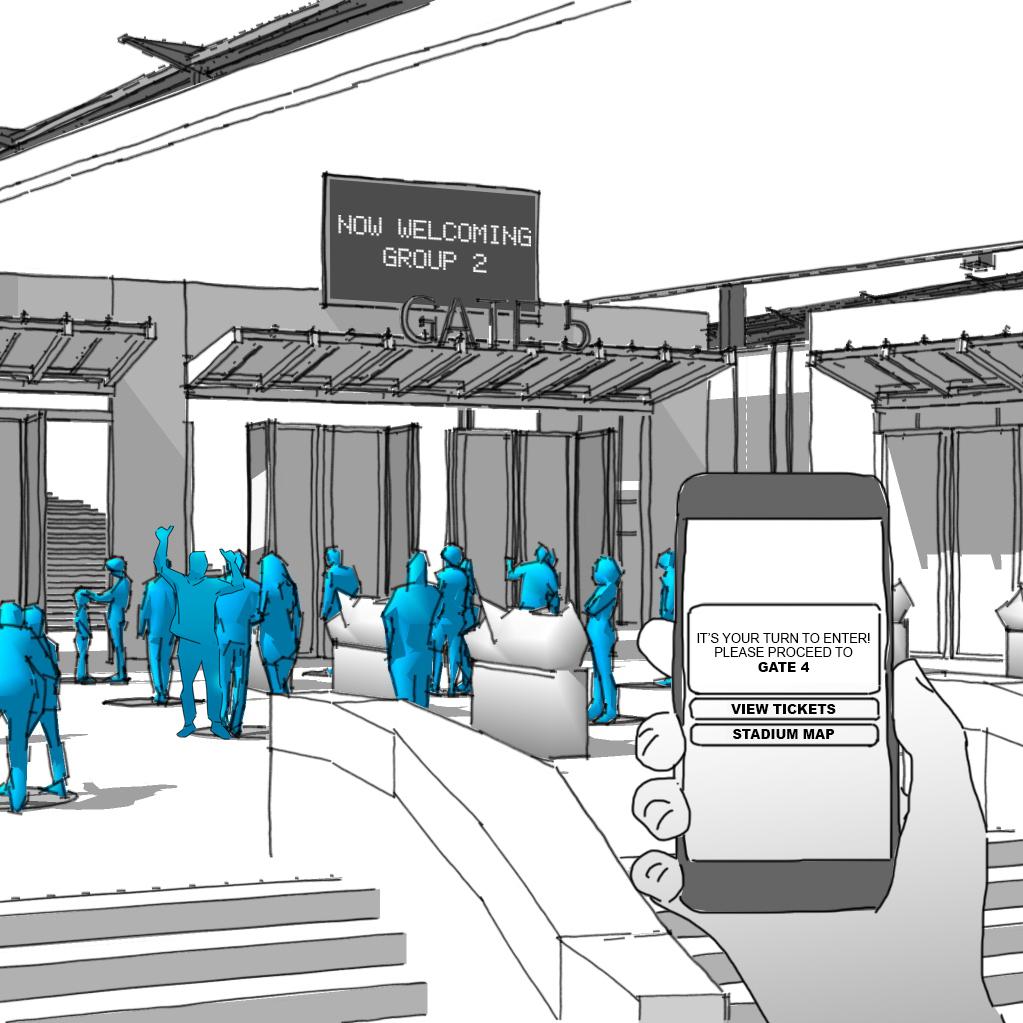
graphic: Populous
Flexible scenario planning

If small groups wish to sit together, new flexible loge-style seating could be added in the bowl. By adding temporary partitions and simple drink-rail overlays, this new seating product can be installed with minimal modifications to the venue.
graphic: Populous
From the beginning of the pandemic, with some areas hit in late 2019, it was immediately clear that any reopening and business solution for venues would require full stakeholder engagement. Even before reaching the specific needs of your own venue, it is essential to take the following into account:
- recommendations from national and international health bodies;
- guidelines from local and national government;
- future risks, as yet unknown.
Almost every league, federation, or event around the world has adopted an approach to spectator and fan safety in the face of this global pandemic. However, as the virus spreads at different rates around the world, from town to town and continent to continent, so the specific approach will change dependent on location but also over time.
Prefer to have your own copy? Or even better: subscribe to the sb magazine - and you receive all six issues per year
“This is very much an issue of immediate risk assessment,” says Sherri Privitera, Populous Senior Principal and Americas regional board member. “While we are seeing some leagues open to a small number of fans, others have called off the whole season. As designers we can help those who make these really big decisions see their specific situation in the light of their current national health and government guidelines.”
As well as differences from town to town, things can also change quickly within a location, according to Populous Senior Principal and EMEA sector lead Mark Craine. “The UK Government is making national and regional decisions based on the data that is changing right in front of them. This means that while we can prepare everything in advance for one scenario, a sudden change will often mean that a full reassessment is required in a short period of time. Having multiple options and advanced scenario planning while also developing time saving strategies and tools has been key supporting venues in this new constantly changing environment.”
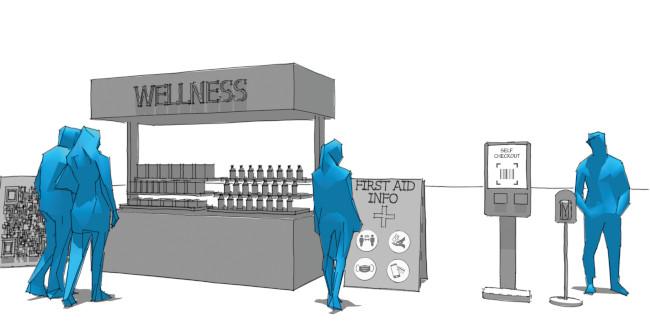
Venues could convert concession portables to wellness staions, with pre-packaged face masks, sanitising wipes and hand sanitizer that can be pruchased in app or in person using self-checkout.
graphic: Populous
Health & safety
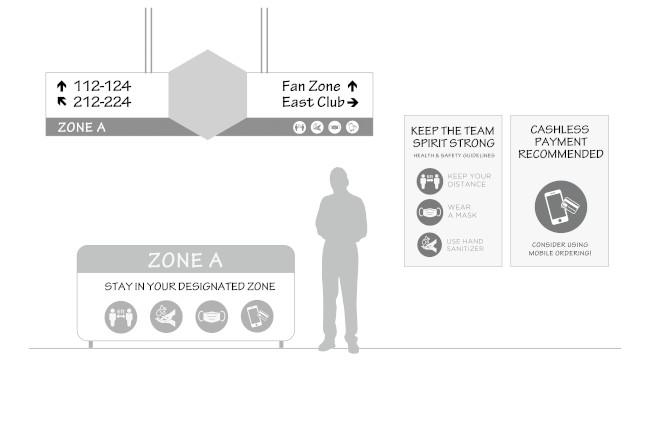
Reinforcing pre-purchase communication in the venue is key. Friendly and approachable signage and wayfinding can help build fans' confidence and ease their anxiety. Show and tell any efforts taken around sanitization, rules and regulations for fans.
graphic: Populous
While always a key consideration for stadiums around the world, creating a safe and Covid-secure environment is now a vital requirement for every venue, be it large or small, sporting or otherwise. Stadiums are incredibly tactile spaces and considering the specification of materials that limit the potential for viruses to linger on surfaces will be vital in all return to venue plans. This will naturally also be linked to enhanced cleaning and maintenance regimes, that will operate before, during and after matches.
Upon arrival, all visitors are likely to be met with a range of health testing procedures. From “health passports” linked to digital ticketing to digital thermometers, the entrance to a venue will be a vital threshold to protecting and maintaining all of a stadium’s internal Covid-secure policies and processes. “This is going to be a really important space for every venue,” says Chris Paterson, Populous Senior Principal in the APAC region. “Physical safety and security have long been a priority at stadiums around the world, and a lot of work has gone into making these spaces safe as well as welcoming. Whatever the capacity of a stadium going forwards, the temporary overlay of these spaces to meet these new immediate needs is going to be crucial in safeguarding all attendees.”
Arrival
Flexibility, both physical and organisational, will be key going forwards in a post-pandemic world. The new normal begins before any fan or spectator even leaves their home. Public transport and road restrictions may affect every individual and must be addressed with the relevant authorities prior to any event. Around the world, most stadiums will use a multi-modal transport strategy, with a range of different providers from private individuals to trains and buses, to get fans to the venue.
Meanwhile, the technological advancement that we have seen in stadiums over the past decade has made it easier for them to quickly adapt as venues plan for some fans to return, often at reduced capacities and with stringent health and safety measures in place. Digital wayfinding systems, ticketless entry, and cashless transaction systems have all been put to use as we find ways that grounds around the world can begin to zone their stadiums, to serve all the needs of fans whilst allowing for social distancing and limiting physical touch points during their venue visit.
The key priority for all venues, then, must be in keeping people moving and avoiding queues. Techniques to achieve this could include:
- using targetted temperature screening at entrances to minimise queues into the stadium;
- retaining all toilet fixtures to minimise queues in toilets;
- additional options for click and collect or delivery to seat for food and beverages in concourses.
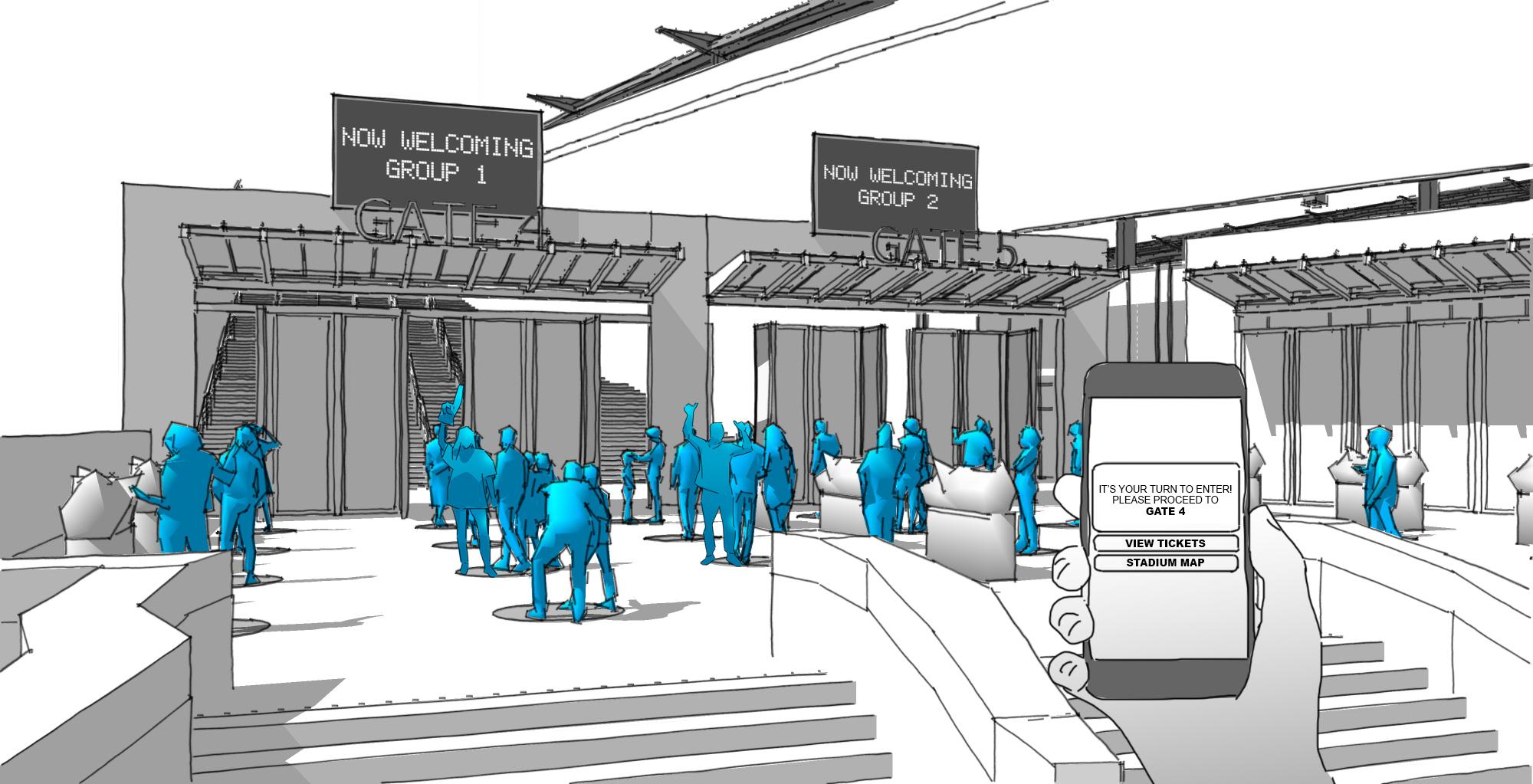
Venues can implement socially distant queuing lines with stanchions and floor markers. Fans could be notified in-app of their entry time and gate location with an alert when it is their group's time to enter. Digital signage would announce which group is currently being welcomed at that gate.
graphic: Populous
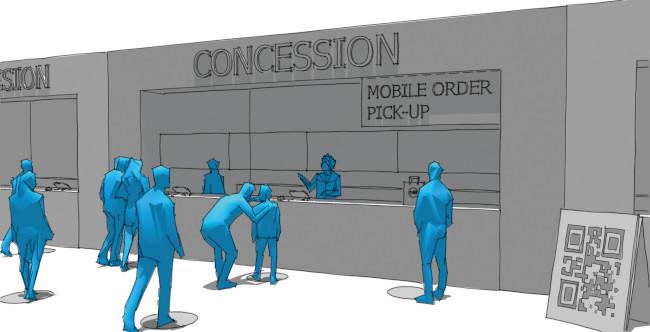
With fans more hesitant to wait in line, order, and pick up food and beverages at concession stands, this could be one way to convert 50 % of POS into pick-up and "grab&go" options. No built modifications are required beyond temporary signage.
graphic: Populous
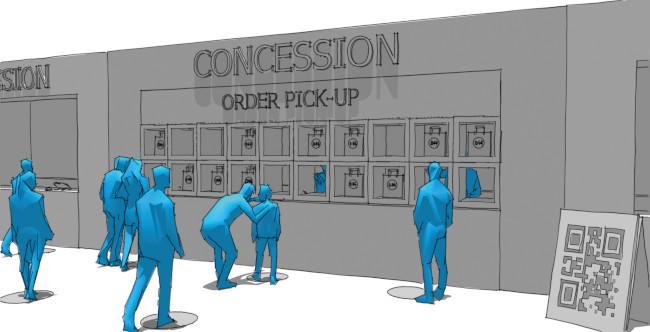
Venues could also add pre-fabricated locker systems to existing concession counter tops to convert select concession stands to "grab&go" windows for contactless food and beverages pick-up locations.
graphic: Populous
Restarting, reopening and adapting
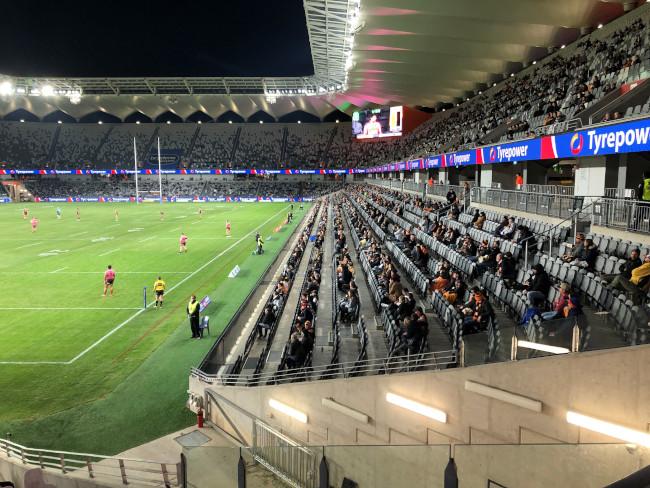
photo: Populous
One similarity that can be seen around the world as venues plan for the future is the need for bespoke solutions. While approaches can be adopted in common, solutions need to be tailored to fit each and every case – and need to have back-up built in. As Al Baxter, Populous Principal in APAC tells us, every client and venue will need a range of possible solutions. “We have seen so many nuanced requirements come out of the hundreds of meetings that we have had with our contacts as they prepare to reopen into this ‘new normal’,” Baxter says. “While many of these needs can be grouped together, the design solution is anything but homogenous.”
And change comes quickly. For example, an extensive and thoroughly evaluated plan on Friday may be made redundant come game day on Sunday should local circumstances or national guidelines change. “We always knew that people in our business were resilient,” says Scott Capstack, Principal in the Americas region, “but we have seen first-hand some incredibly clever and strategic approaches to ensure that fans and spectators remain safe and secure, from the moment they arrive at a venue until the moment they leave.”
Venues within a venue
The longer that the pandemic affects all areas of the sporting world, the clearer it seems that venue operators are going to have to be flexible on both their capacities and their strategies for moving people around the internal and external spaces of their buildings.
Stadiums are designed for people, whether it is 5,000 or 100,000. There is an experience in being in a stadium, in close proximity to thousands of other fans, that is perhaps unique to sports and entertainment. The atmosphere of this environment is key. But how do you replicate this when the capacity is 30%, 20%, or even lower? The goal of the “venue within a venue” approach is to work with governmental guidelines and tracking and tracing guidelines to create a “stadium” experience whilst limiting contact between fans before, during, and after matches. As Tom Jones, Senior Principal in the EMEA region notes “This builds on our current approach of designing a range of spaces and experiences into stadiums, so we have already been able to identify many situations where all of the concessions and hospitality spaces within a stadium can be made accessible to smaller groups through strategic and digital wayfinding and temporary barriers.
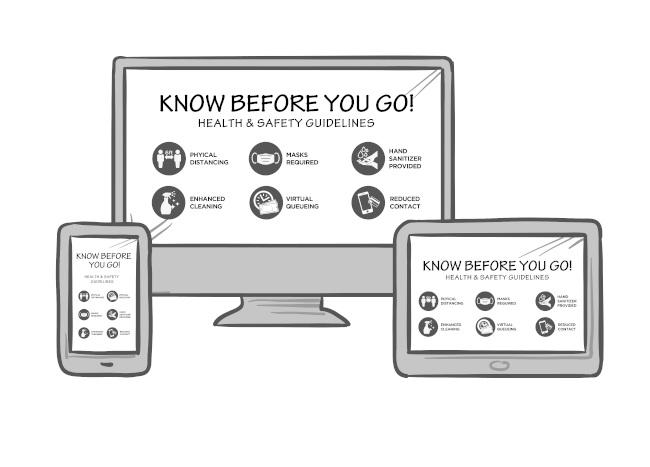
Communication is key to setting expectations with fans and making them more comfortable. Fans want to know what to expect, and what wellness measures are being taken before they decide to purchase tickets.
graphic: Populous
Conclusion
All surveys point to keen demand to return to live sport, however governments are understandably cautious about the public health issues relating to the safety of groups of people meeting in stadiums. Hopefully the feedback and analysis of test events around the world can help to give confidence that stadiums can start to welcome fans back to venues in a safe and controlled way, with suitable protocols and procedures that can give confidence to players, officials and spectators.
One key question will be which of the changes that are required to respond to this pandemic are temporary, or whether they will be a marker for more permanent changes in the design and operation of stadiums. Naturally, there will be many more changes before we reach the end of this pandemic, but it will be interesting to see when crowds are welcomed back without restrictions, whether the in-stadium experience will look very different to how it was before?

